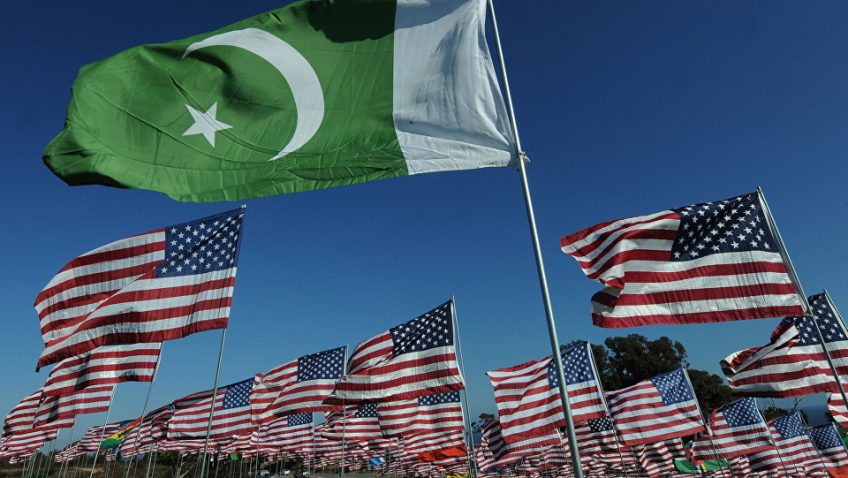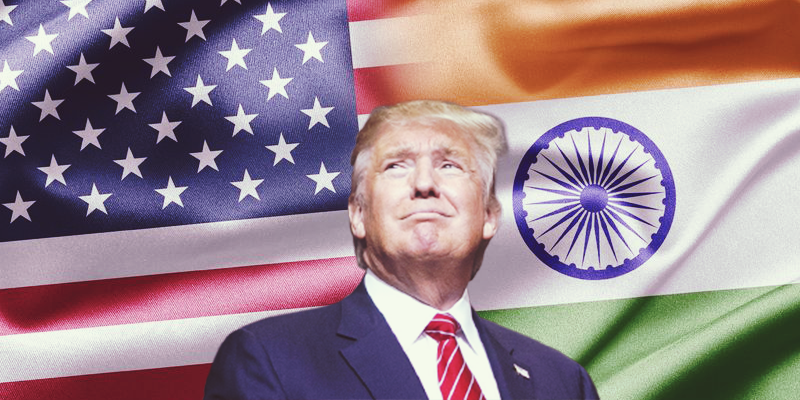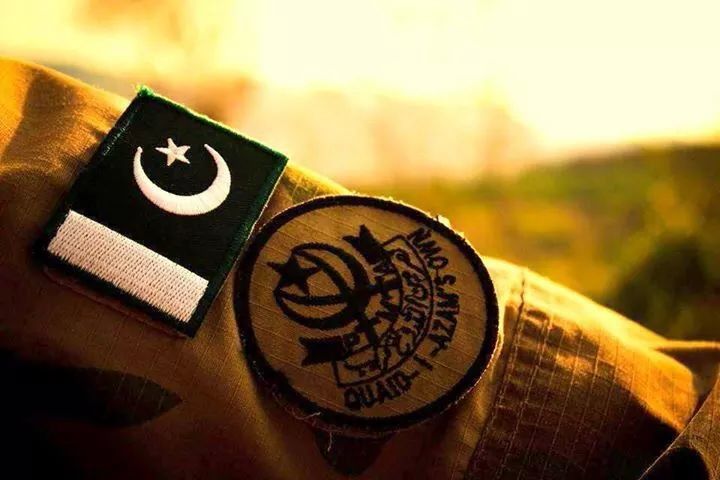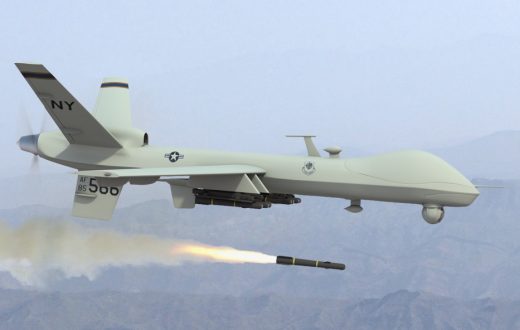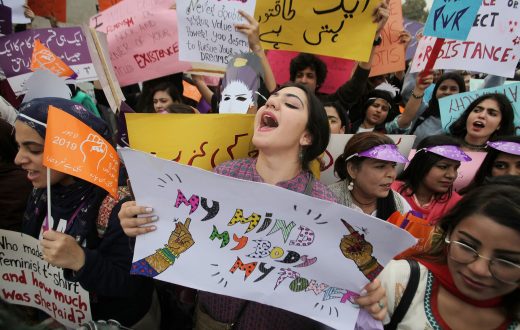Introduction
The U.S is among the early countries to have established diplomatic relationships with Pakistan. Relationship dates back to October 20, 1947, it can be extrapolated that the relations have been based strictly on military and economic support. Pakistan had the options of building allegiance with Soviet Union or United States; however, Pakistan opted for the latter. Moreover, Pakistan and the U.S remained allies against Soviet Union in cold war and Pakistan played a frontline role against War on terror. However, the U.S and Pakistan relations grow weaker on the issues of Afghanistan, safe haven of terrorists in Pakistan ,the US-Indo ties, CPEC, rise of China and Nuclear facilities in Pakistan.
Background
Commander-in-chief Ayub Khan, foreign minister Zafrullah Khan, foreign secretary Ikramullah, finance minister Ghulam Muhammad, defence secretary Sikander Mirza and special envoy Mir Laiqat Ali visited US, aiming to receive financial aids from the country.
Pakistan signed Mutual Defense Assistance Agreement with the United States. The U.S also established a Military Assistance Advisory Group in Rawalpindi. Pakistan supported the US in cold war and lease Peshawar Air Station to the American Army for keeping an eye on Soviet Union and its ballistic missile programme. During the era of Ayub khan Pakistan received massive assistance from the U.S. Pakistan also assisted president Richard Nixon in making his first visit to Peoples’ Republic of China. However, President Jimmy Carter, an anti-socialist, won the presidential election of U.S and announced to seek a ban on nuclear weapons. Bhutto lost the favours he enjoyed whilst Nixon was U.S president as Carter did not appreciate his policies and tightened already placed embargoes on Pakistan. During Zia ul Haq’s regime, Pakistan and United States enjoyed a warm and congenial relationship, which was primarily based on military ties and advancements.
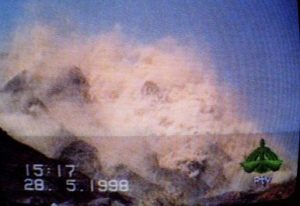
By the year 1981, Pakistan was discussing a $3.2-billion aid package with United States and in 1987 Pakistan became the second largest recipient of aid after Israel. However it is alleged that although Pakistan disclosed that it could enrich uranium and assemble a nuclear device in 1984 and 1987 respectively, the sanctions were not imposed till 1990.The US, under the Pressler amendment, imposed sanctions on Pakistan, as the country by then had lost its strategic importance in soviet war. In 1998, Prime minister Nawaz Sharif conducted nuclear test in Balochistan, in retaliation to similar tests conducted by India, which invited the wrath of Clinton’s administration on both the countries. President Clinton imposed sanctions under Glenn amendment on India as well as Pakistan.
9/11 attacks and US’s invasion in Afghanistan

After the 9/11 attacks and US’s invasion in Afghanistan, Pakistan became one of the most important strategic allies for United States. Initially Islamabad tried to strike a negotiation deal with Taliban and al Qaeda members to handover Osama bin Laden to American authorities.
However, when negotiations failed, Pakistan allowed American army to use its military bases for launching attacks on Afghan soil. In 2003, United States officially forgave $1 billion worth of loan it had granted to Pakistan in a goodwill gesture and appreciation for Pakistan’s cooperation. In 2004, President George Bush officially declared Pakistan as a non-Nato ally granting it the authority to purchase strategic and advanced military equipment. In 2007, a report was issued in which Islamabad was accused of using aid money provided by US to Pakistan for its cooperation on war on terror, for strengthening its defence against India.
Trust deficit
The trust, on both sides, has been missing since the war on terror started as US on several occasions has accused Pakistan Army to tip the Taliban and pro-Taliban factions off on US operations. In the June of 2008, an air strike by the US Army killed 11 paramilitary soldiers of Pakistan Army Frontier Corps, along with eight Taliban. The famous Kerry-Lugar Bill, was passed in the October of 2009. The bill entailed the approval of granting $7.5 billion of non-military aid, if the command of the country accepted certain condition. The bill clearly showed US’s distrust in Pakistan’s military command and considered Pakistani Taliban more threatening than Afghan Taliban, amongst many other essential points.
In the beginning of 2011, Raymond Davis, a CIA agent in Pakistan killed two Pakistani men in Lahore. Davis was taken into custody for killing civilians, however, American officials claimed that he was entitled to diplomatic immunity and must be released immediately. Raymond Davis was later acquitted of the murder charges and was sent to United States. In the May of 2011, Osama bin Laden was killed in an operation conducted by US Navy Seals in Abbottabad, Pakistan. President Barrack Obama claimed that the information pertaining to the operation conducted in Abbottabad was not shared with Pakistan Army. However, ISI claimed that the operation was conducted jointly, a claim which was blatantly denied by President Asif Ali Zardari. Since the war on terror started in 2001, Pakistan has received an estimated amount of $20 billion from United States; however, in the wake of OBL’s raid US withheld $800 million of aid to Pakistan.
The US-Pakistan relations plummeted again when 24 Pakistani soldiers died in an air strike by the US Army at Pakistani check post at Salala. Afghan and US officials claimed that the firing was a result of the attack launched from the Pakistani side of the border, however, the Pakistani military and government denied the claims. As a result of the attack, Pakistani government ordered US army to evacuate Salala air base which was being used to launch offensive on Taliban and militants. Moreover, the government also halted Nato supplies for United Sates. Sen Patrick Leahy, a Democrat and the chairman of the subcommittee, and the panel’s top Republican, Sen Lindsey Graham, said money for Pakistan was cut 58 per cent as lawmakers questioned Islamabad’s commitment to the fight against terrorism. Moreover, the Senate Appropriations Committee, on May 24, voted to cut aid to Pakistan by a symbolic $33 million – $1 million for each year of jail time handed to Shakil Afridi, a Pakistani doctor who allegedly assisted the Central Intelligence Agency (CIA) in finding Osama bin Laden.
In 2017, Trump lambastes Islamabad over terrorist ‘safe havens’ and friction between Pakistan-US relations got further strained when President Trump in August unveiled his administration’s policy on Afghanistan and South Asia. Trump in his diatribe denounced Pakistan for allegedly allowing terrorists to maintain “safe havens” inside its territory. In 2018, Pentagon canceled $300m aid to Pakistan .Due to a lack of Pakistani decisive actions in support of the South Asia Strategy.
US-India Growing relations
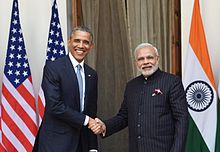
The Indo-US alliance has grave security implications for Pakistan. The U.S.-India defense relationship reach USD 4 billion in 2011. In 2016, Washington designated India a “Major Defence Partner,” The U.S.-India economic relationship, for decades practically nonexistent, has grown quickly and U.S. exports to India have increased five-fold from USD 3.6 billion in 2000 to USD 17.7 billion 2010. US military sales to India went from zero to $15 billion in the last 10 years. The United States hopes to get a major share in the $30 billion India plans to spend in military modernization over the next seven years, says a senior American official. The U.S.-India Civil Nuclear Cooperation Agreement in 2008 had instigated grave concerns in Islamabad. A report commissioned by the United States (US) Congress has placed India as the second largest arms buyer among developing nations (2016).In 2016, India was in talks with the United States to purchase 40 Predator surveillance drones, a possible first step towards acquiring the armed version of the aircraft. In 2017, President Trump announced his Afghanistan and South Asia policy. Pakistan was given a strong warning to stop providing safe havens to militants, including the Afghan Taliban/ Haqqani network, who are fighting and killing Americans; consequences for Pakistan. Partnering with India in Afghanistan and South Asia were part of the policy. Recently, the so-called “2+2″talks in sep 2018, including strategic and security topics with India and sidelining Pakistan is the major sign of the US interest in the region. Pompeo said the US values its relationship with India, and “We fully support India’s rise.”
Pakistan sees Indo-US ties against its national interest (http://www.young-diplomats.com/cancellation-of-indian-and-pakistans-meeting-at-un/). All these events will further escalate tension between Pakistan and the U.S.

